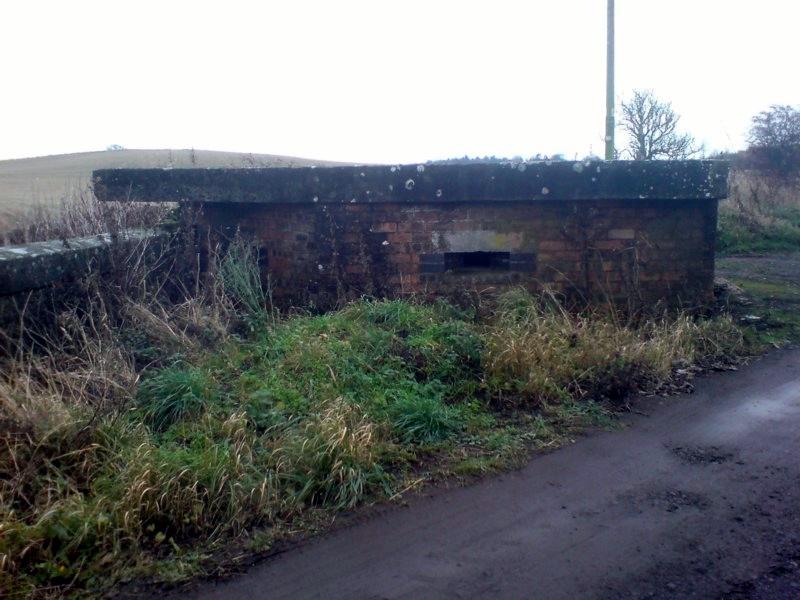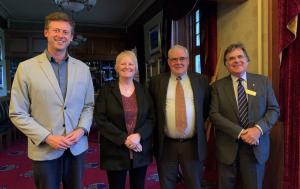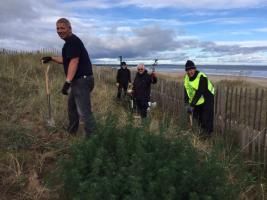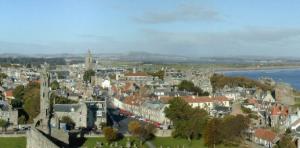Guest Speaker Stephen Liscoe - Defences of Fife
Tue, Feb 19th 2019 at 7:00 pm - 8:30 pm

Club member Jim Allison introduced the speaker for the evening, Steve Liscoe.
Steve, a former professional diver who specialised in investigating historic shipwrecks, is now part of Fife Council’s Archaeological Unit, allied to the Planning Department when proposed developments require survey or excavation to identify remains.
Such is the wealth of historic remains in Fife, the department has already logged 13,000 individual entries in its Fife Sites and Monuments Record.
But the thrust of Steve’s presentation centred on more recent issues – the “Invasion Defences of Fife” – which were put in place from the outset of The Great War and continued in different forms before and during World War II. The earliest defences were mostly gun emplacements to fend off seaborne invasions, particularly in the River Forth, a major centre for naval construction and repair.
With the onset of World War II strategists believed the Fife coastline was a vulnerable target to German airborne invasions from Scandinavia. As a result, gun emplacements were radically expanded to include anti-aircraft weapons and other devices which could also detect submarine activity.
A system of cables stretching from the Fife Coast to the Isle of May and south to East Lothian was operated from a listening and monitoring station based on the Isle.
In the Forth Estuary a garrison of 900 soldiers was based on Inchkeith Island, from where the major defence of the entire area was controlled. A large number of guns with a range of some 30 miles were manned there. Immediately underneath the Forth Rail Bridge, anti-aircraft defences were constructed on Inchgarvie Island to protect the Bridge.
Gun emplacements, bunkers and pillboxes were scattered all over the county, many of them still in evidence.
With a number of intriguing aerial slides - historical and modern – Steve let his audience see some previously unheard-of defence measures. For example, the “Stopline”, a system of ditches, anti-tank batteries, mines and barbed wire which stretched all across inland Fife from Dysart to Newburgh. Some bunkers and pillboxes which held guns or searchlights fortifying Fife still exist. This Stopline was designed to delay any enemy advance which could have taken place if a coastal invasion had been successful.
Steve also revealed that a “Dad’s Army” of highly-trained and well-armed men could be placed in secret underground bunkers from which they could mount attacks from behind enemy lines if an invasion had gone through. A small number of these bunkers are still in existence, one of which is visible within the Craigtoun Estate on the outskirts of St Andrews.
Bruce Rollo proposed a vote of thanks to Steve for a talk which he felt would encourage the audience to be rather more perceptive and able to spot such relics while travelling around the Kingdom.
'What We Do' Main Pages:

.jpg)


